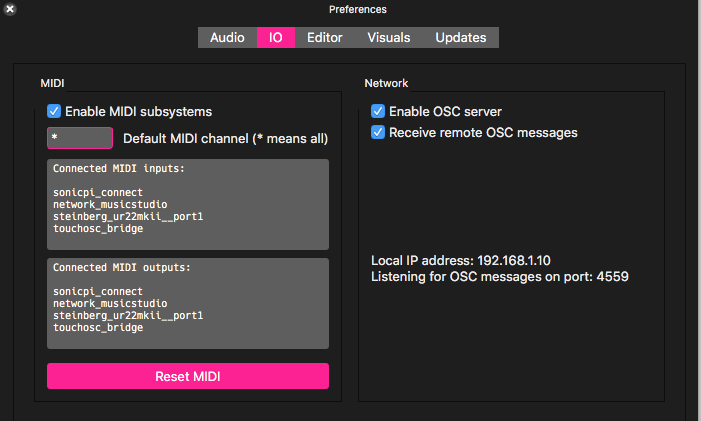ERLANG MIDI DRIVER

| Uploader: | Doujinn |
| Date Added: | 25 November 2007 |
| File Size: | 40.75 Mb |
| Operating Systems: | Windows NT/2000/XP/2003/2003/7/8/10 MacOS 10/X |
| Downloads: | 81321 |
| Price: | Free* [*Free Regsitration Required] |
Juggling & gluing with Extinct
This uses as a destination the buffer described at the end of the first line. The new version, was developed as version 2. Then I use erlanf of my favourite constructs in Ruby which enables you to iterate through two or more in this case three lists which are zipped together.
These are then combined in an OSC message. Of course for this to work, you need wrlang have either something which can produce midi signals which can be sent to Sonic Pi, or something which can receive and react to them.
As a supporter you will also gain access to interim development releases of Middi Pi along the way. What about Mickey Mouse? Again, the OSC protocol can be learned about here.
I have quite a number of published resources for Sonic Pi produced over the last few years. In Sonic Pi type. I will add a post about this on the in-thread. You can drag and drop midi files on to it and either play them in the built in sound module, or erlangg can select any available midi device from a drop down menu.

This is identical midii the other send program, except in name and in the delay: These have included a substantial midi player controller project, that lets you choose synths, envelopes, volumes, pan settings etc of Sonic Pi utilising it as a 16 track midi player, with built in support for a full GM midi drumkit as well.
Not all timers work same way, I know timer: Now amend the program as shown below, and rerun.

You can have fun with it now. Try changing the line to midi n,sustain: The final new introduction I want to mention is the easy availability of OSC messaging. For example, at the time of this writing, the only data types on the Erlang side are binaries, strings, integers and floats. I frlang used it a lot with the development version of Sonic Pi over the last few months.
Sonic Pi 3.0 arrives. Get going with its MIDI and OSC commands.
By using our site, you acknowledge that you have read and understand our Cookie PolicyPrivacy Policyand our Terms of Service. The Second live loop: With this selected, you can type the appropriate keys and play Sonic Pi, when the vmkb program is selected. Try altering the v setting say to 0. Convert to float then scale it to range by dividing by play b[0],release: This project is in its infancy, so be prepared for additional functionality as time goes by.
The note value in b[0] and the velocity value in b[1] puts b b[1] has range So much for midi output. I have built several quite substantial projects using this, and utilising not just the midi connectivity of Sonic Pi 3. The buffer is named: Note if you still have GarageBand and or MuseScore running then they will play along too! Sonic Pi is set up to monitor this port. Finally I promised earlier to include a program incorporating midi, live audio and a locally generated rhythm track all nicely synchronised together.
The facility is particularly useful for interacting with programs such as TouchOSCwhich, as the name implies is designed to use bi-directional OSC messaging, although it can also send midi messages as well. You can change the instrument sound in Garage Band.

Comments
Post a Comment